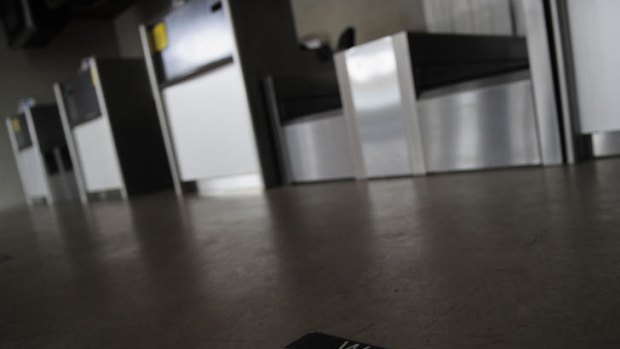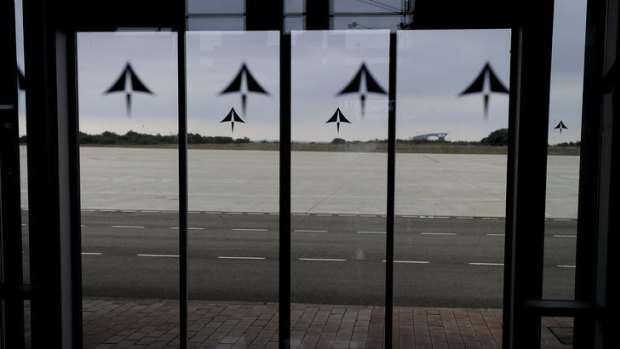This was published 12 years ago
Anybody out there? Ghost airport desperately seeks passengers

The empty check-in counters of Huesca-Pirineos airport.Credit: AFP
Not a sound in the departure hall, not a single person at the check-in counters: in the northeastern Spanish city of Huesca a ghost airport awaits its hypothetical passengers.
It is an eerie symbol of a crisis-struck country, of a runaway construction boom that went bust.
In the 150-space parking lot, there are just a few cars in the autumn morning, all owned by the 20 or so employees still here.
Within the small, seemingly new airport building, a cleaning woman polishes up the toilets while outside a machine sweeps the pavement.
The main activity these days in Huesca airport, which opened in 2007, is keeping up its appearance.
It is not an isolated case.

The empty tarmac of Huesca-Pirineos airport.Credit: AFP
Spain, where economic growth was driven for years by a building bubble that popped in 2008, has more international airports for commercial flights than any other country in Europe: 48 public and two private.
Some, like Lerida in the northeast or Cordoba in the south, handle no more than a handful of flights.
The two private airports are also in a bad way. One for the eastern city of Castellon opened in March and is still deserted. The other in Ciudad Real, south of Madrid, opened in 2008 and may close after welcoming its last flight by budget airline Vueling in October.
In all there are some 20 airports that handle fewer than 100,000 passengers a year, well below the 500,000 they need to be profitable, according to Barcelona University economist Germa Bel.
Among them, only two or three could be justified, for example to prevent islands in the Canaries from being cut off, he said.
Fifteen passengers in July, zero in August, four in September: Huesca airport scrapes by on a few private planes that use its strip. The last commercial flight took off in April.
For Bel, it is a shining example of Spanish public infrastructure spending gone wild.
"In Huesca, there is an airport, high-speed railway and a motorway!" he said.
Spain also has the world's second longest high-speed railway system, behind China, and Europe's biggest motorway network.
"In Spain there was the property and then the public works bubbles, and after the bubbles and overinvestment comes the long period of digestion and paying the bill," Bel said.
Originally built for the ski season, the 40-million-euro ($A53-million) airport suffered from the bankruptcies of local airline Pyrenair and a Chinese pilot training school Top Fly.
With a total 20,000 passengers in four years, it represents an investment of 2000 euros ($2675) in public money for each traveller who passed through, and that is without counting the running costs.
"It was conceived without a solid business plan," admitted Rafael Fernandez de Alarcon, head of public works for the regional government of Aragon.
Its use is particularly doubtful when you consider that Huesca, population 50,000, is only 70 kilometres from Zaragoza airport.
But "every 100 kilometres you need an airport for safety reasons," and Huesca could be a base for rescue missions in the Pyrenees, Fernandez de Alarcon argued.
"It was necessary in a rich Europe like in 2000 when this airport was envisaged but now that Europe is in an economic crisis it is being thrown into doubt," he added.
"Today I would not finance it," he admitted.
In Huesca, the public airport manager AENA and the region are cooperating to inject life into the airport: the official message is that it should not close but it needs to lure pilot training schools to be profitable.
The regional public works boss, who is negotiating three such projects, said he was "sure and optimistic" for the future. One day the airport could even attract "a few charter flights," he said.
AFP
Sign up for the Traveller Deals newsletter
Get exclusive travel deals delivered straight to your inbox. Sign up now.